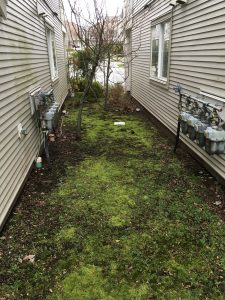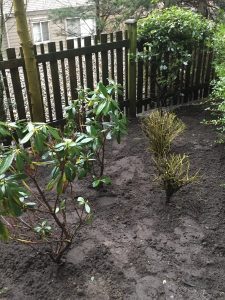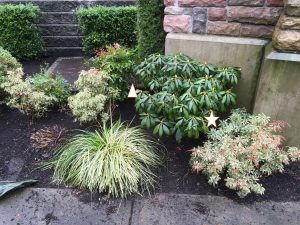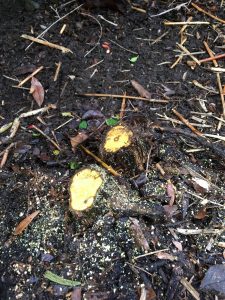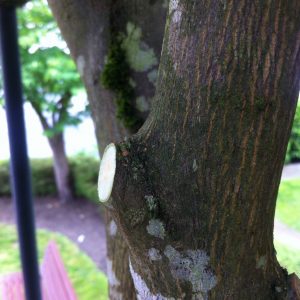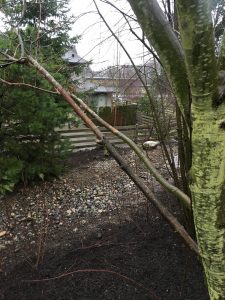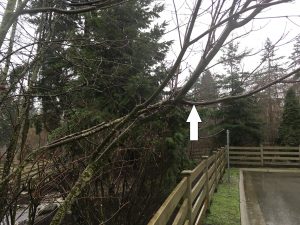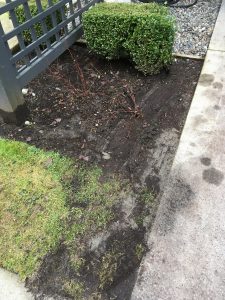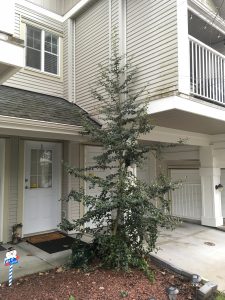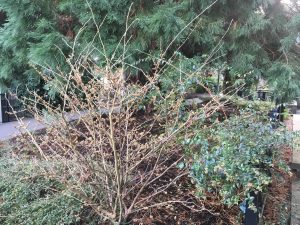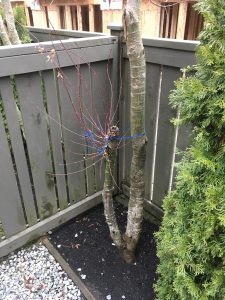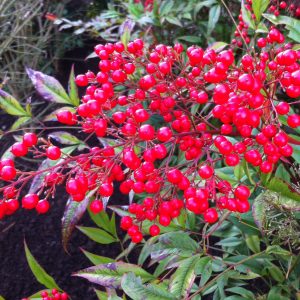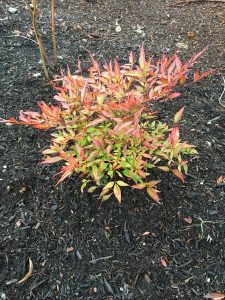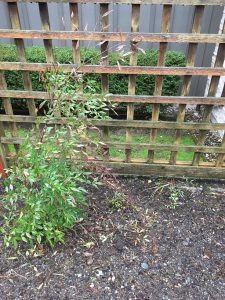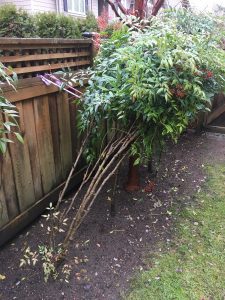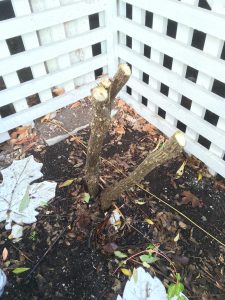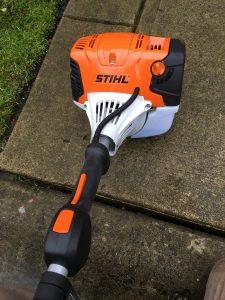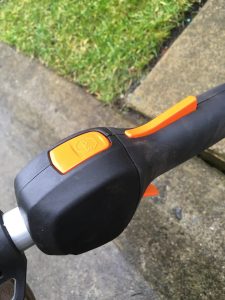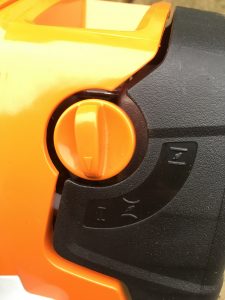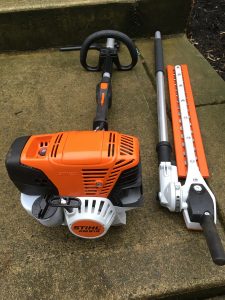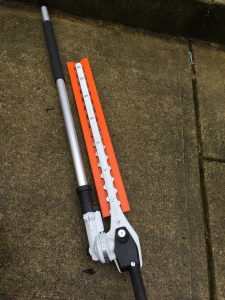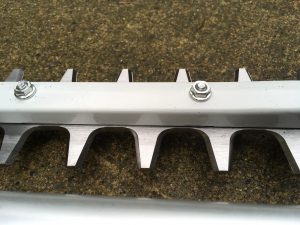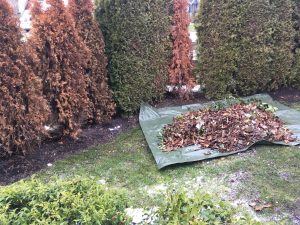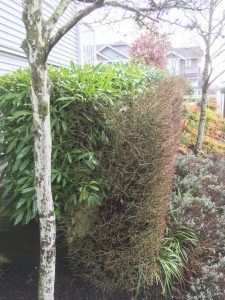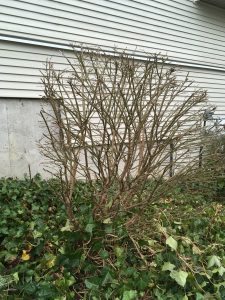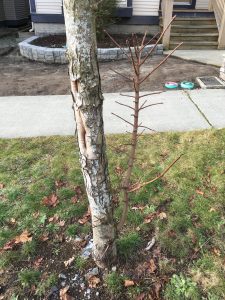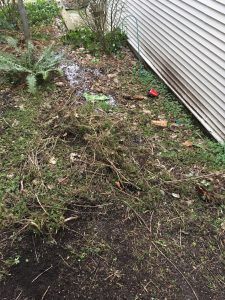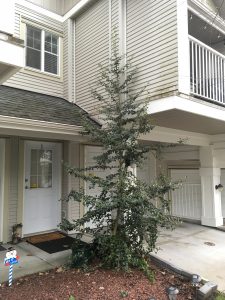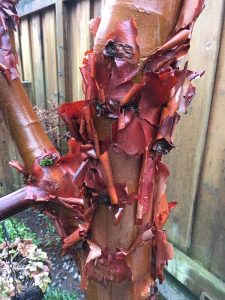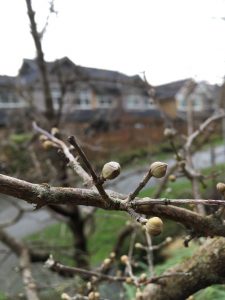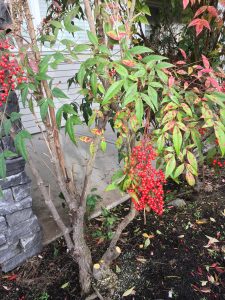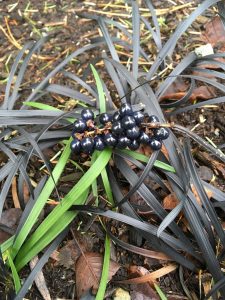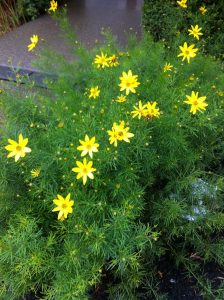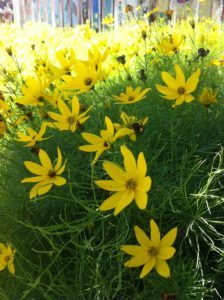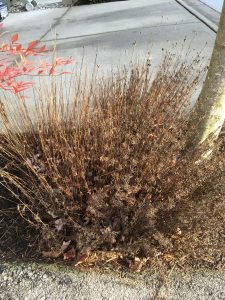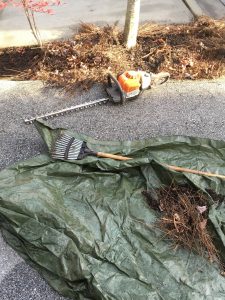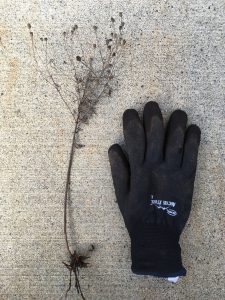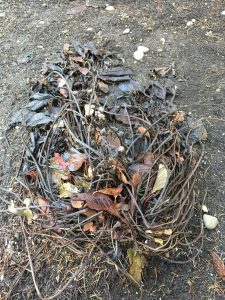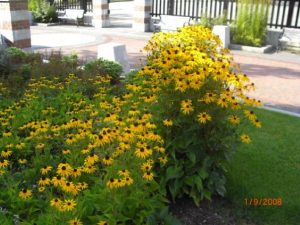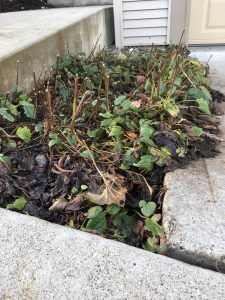I love people who fight for new lush lawns. I admire their tenacity and envy their deep pockets. But often they get defeated by the site conditions, like available light, good soil and proper seed.
Promise
This is awesome. I found this sign in between two units on a strata complex we have taken over recently. Now that the key beauty strip areas are cleaned-up, we start hitting the low key zones. Like this space between two units.
The sign is full of hope and promise but when you look around, you know it didn’t really work. Why not? Why can’t strata owners plant some grass seed and enjoy a green buffer zone?
Assessment
Shade
Guaranteed, this is the number one problem here. It looks OK in winter but by spring, as the trees flush out with new growth, they add more shade. The buildings do the rest.
Plants need light and water for photosynthesis. Pruning the trees would help but it wouldn’t be enough. If you remove too many branches, the tree won’t be able to feed itself. Like grass, trees also struggle to reach light so they can manufacture food.
Soil
I wonder about the soil depth and quality in a buffer zone like this. In addition, this rectangular patch is a small ecosystem. One idea would be to top-dress the area to help the new shade mix seed. But I am still not convinced that there would be enough light for the grass to thrive. Owners with deep pockets are free to attempt it. Top-dressing is actually a very pleasant landscape job.
Moss
What’s wrong with moss anyway? It’s prized in Japan. I’ve seen it in beautiful Japanese gardens. I would plant moss and let it go. But people love their lawns. It’s an addiction. Until site conditions cure them.
Vents
It’s also possible that the vents on both buildings affect the grass. Assuming the vents are from driers and considering that in my own place they get used daily, it could adversely affect the grass seedlings. We don’t even know if the new seed got watered and if the watering took into account the effect of the drier vents.
Conclusion
Always consider your site conditions when your lawn struggles. It could be more than just lack of fertilizer. Shade is always a huge issue and the same goes for soil conditions and proper watering. Seek professional advice. Call Proper Landscaping for professional help.



